My early days: Memories of my father goes back to my school days in early 70’s. One day after I returned from my school like all youngsters I was sitting on the top of the gate pillar of our house at Newfield, watching a football match played there. He was at that time painting “Symphony? in his makeshift studio in what usually was supposed to be the drawing room of the undivided joint family. His working space kept on changing as I saw him painting sometime sitting in the verandah then in the courtyard, always following the setting sunlight. The canvases at times were quite huge but the studio environment was un-altered. The touch of modernity in the studio format was never to be seen. He had designed his own wooden easel, which I haven?t seen him use very often.
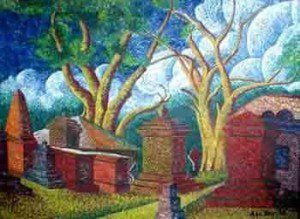
There were two people watching him paint but with two set of vision. One was my grandmother who would sit in the afternoon, on the opposite verandah and stare at the artist at work, sometimes giving him a break with a cup of red tea with lemon. This was the time when they shared lighter moments and also the hard realities. Paintings rolled out with a very slow pace primarily for two reasons space and finance.
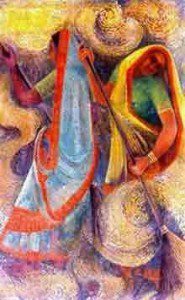
The other person was my mother, but for whose selfless sacrifice we would not have seen the work of my father. She returned home after her school and would immediately get into the household chores. But in midst of her household works she kept a keen watch on the artist at work. The work would stop for another break the moment the evening newspaper “Jugantar” was dropped by the paperwalla. Hurriedly, he would read the headlines and as much as he could before the subscriber would arrive from office. He would complete the newspaper till the last word next day.

As the sunlight reduces he would wind up the days work and have a good wash and take his evening stroll to the road side market place or take stalk of what I have done the whole day at school and make the mosquitoes go out of the window so that we could sit down for study. Those days life had a slow pace. The dinners were early particularly during winters.
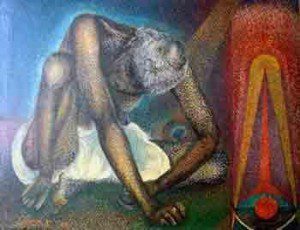
His friends: My father had a couple of good die hard friends. One such friend was (Late) Promotho Sen, a merchant who resided at Calcutta. He used to visit Guwahati once a year. With him would come a year long supply of exclusive paints, brushes, oils and canvas. At night the stock of art materials would be spread out and I remember my father talk to my mother about his plans to create new paintings out of the new stock. All dreams would be transformed to paintings in the coming years.
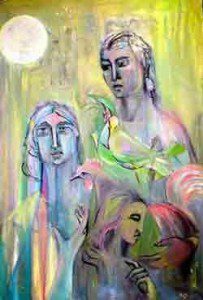
Sometimes I feel that scarcity of art materials had reduced the extent of his canvasses.
Another friend I remember was Mr. Sankar Baruah who was settled in Philadelphia USA, would visit once in a decade. He too was a good admirer of my father and his paintings. Then there was (Late) Dr. Prafulla Dutta Goswami. Often he would visit our house usually during the winters on Sundays and spend the day seeing the new paintings created by the artist over cups of tea. They would sit in the garden under the Mohua tree and I would come and go in between their long discussion. They were at times joined by another good friend (Late) Ajit Sen who resided near the Meghdoot Cinema. In those days as far as I remember seeing the first time a colour photograph being taken by Mr Sankar Barooah who had photographed most of my father’s paintings during the very early 70’s, probably
Mr. Barooah?s last visit to India. I too probably was attracted to the Hasselblad and Rolleiflex during this time. All his friends do possess a painting or a sculpture as a souvenir. There were some comrades like (Late) Aurobindo Ghosh and (Late) Dadhi Mahanta and some more.
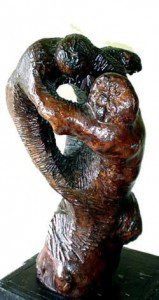
His paintings: Many viewers are often bewildered on how the Artist had applied the finest dots. Last year, when I had been doing the research for designing the website www.artofasudev.org I found that the brushes he had used till 4 February 1983, were mostly hard hog hair brush mostly No.10, but created the finest dots.
The quality of brush some imported ones those days were by far better that the ones today.
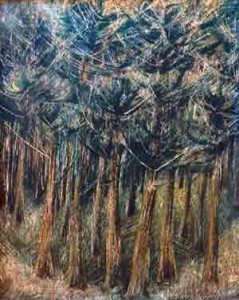
The ground was prepared by him with some time tested material that he would collect from different merchandise and places. The coating on the canvas retained the magical effect till today. Viewers at the recently concluded ASUDEV Retrospective III organized by Srimanta Sankaradeva Kalakshetra were very curious to know about the restoration method that I had applied to maintain the luster and joie de vivre of the paintings even after eight decades. Even the water colour temparas retain the magical effect of freshly done work.
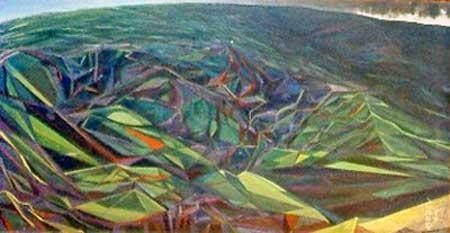
The tiniest of dots in his paintings are seen in “Symphony” 1973 which is also one of the largest in size in the permanent collection of The Directorate of Cultural Affairs, Government of Assam for the State Art Gallery and also in “Flame of flesh” 1950 which is an intense study of woman anatomy.
Asu Dev?s experiments with dots or “pointillism? dates way back to 1930’s. We often come across “thinkers? attributing his works to that of old masters. Even if he was ever influenced by any of the old masters (we do not know and will not ever know). The possibility is very narrow. The stature of persistent work that he had accomplished over a period spread over five decades live a vital question for a researcher, than jump into quick and casual conclusion. In the late 1920?s very rare publications of old master works that too in colour and few or no movement of art exhibits for viewing in galleries as it is today was accessible. It is therefore not quite proper as many casual thinkers exclaim at times relating the works being enthused or attributed to the 17th or 18th century old masters. However we may accredit his works having skeletal resemblance to the old masters sometime, somewhere.
I however would attribute his technique and arrive at a thinking, that it could be his association with odd assignments as a textile designer in the late 20’s and early 30’s in different parts of the country in various textile mills, would have infused in him the idea of application of the textile designing technique that we see in his paintings later.
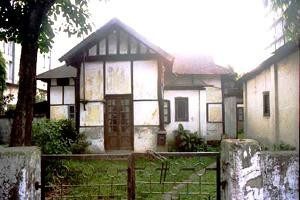
In a way was he unknowingly working with pixels bringing the modern digital imaging in his paintings? What modern day photography is struggling to establish in terms we come across as Mega pixel and effective mega pixel used for digital cameras.
(A mega pixel refers to one million pixels, and is commonly used in reference to digit al cameras as an indication of resolution capability. A pixel is a tiny square on a computerized display that is so small it appears as a dot. The display screen is a solid grid of these squares or dots, which can be easily seen with a magnifying glass. The more pixels or dots that make up the display screen, the clearer the resolution or image will be. Greater numbers of dots or pixels allow for more refinement of the image, which results in higher, truer image replication…)
The mega pixel effect on his paintings, if established someday will open up a new approach in viewing and understanding the technique incorporated by the painter.
Asu Dev?s paintings have an application of different levels of dots or pixels. None of the dots or strokes has any repetition in either size or form. In some paintings like
“Harijan” 1966, and “Humanity Uprooted” 1968 the dots are small dabs or strokes. In the water colour tempara like “In the Cornfield” 1957, “Gossip”1936–40, “Looking for Fish” 1965 and in “Santhal Virgin” 1936–40 again the dots are as if sprayed. The minutest details are clearly visible in these paintings. Yes, as he sometimes said “…all that you see around in life is a cluster of tiny dots…” His paintings are images made up of little dots we can relate as pixels. Can’t we?
In one of the write up written by a close aficionado (Late) Subroto Ghosh written in 1983 “… he was always of the opinion that every creation was a collection of dots and he sincerely took this idiom as his own technique and anthropomorphism in his art found a lively expression through the medium of dots with tempera effect of calm and soft tone on his canvas…”
In some paintings he also tried to experiment on permutation and combination of dots and strokes, dots and washes, and so on. Like we see in “Picnic? 1950, “The Silent flutter” 1965, “Light more light” 1964 “Springtime” 1978, Shadow of life 1981,
In different phases of his career he had tried to diverge from his focal theme, “Woman of North East India”. Predominantly the working woman, the Bodo, Kachari, Garo, Lushai, Khasi, Naga, Santhals and other tribes, the domicile of North East. You can see the different ethnic communities fishing, harvesting, dancing, weaving, collecting fire wood, selling tea, caring mothers, and other vocation.
Only three or four paintings have a male character from amongst the paintings created by my father.
In certain paintings we could see that he attempted to deviate from the distinctiveness characteristics of his primary theme, but he quickly returned back to his old forte, nature and tribal woman. In the paintings like Life to the lees 1962, Fulfillment 1962, Windows 1962, Lotus pond 1962, Self portrait 1962, Composition 1966, “Eclipse”1974, Composition 1976, Cycles of life 1976, are some paintings were the artist has tried to experiment with a different style. But he quickly returned to his own style of dots.
Asu Dev?s career as an artist could be split–up into four major time periods. The formative years: 1930-1940 followed by the period 1940 to1960, 1960 to 1970 and 1970 to 1983.
The major creation of his works falls in two phases. The formative years were he had paintings in various mediums apart from a sizeable collection of exquisite textile designs and folk motifs. During 1960 to 1970 saw his works based typically on Meghalaya at that time undivided Assam. About twenty five to thirty five paintings in oil were created during this period. In the early 70?s his assignment as a Textile Designer with the Government of Nagaland also turn out another important segment of his creation. Isn?t it interesting to notice that the beginning and the end of Asu Dev?s career had been a spell as a Textile Designer on assignments at Ahmedabad, Khulna, Jessore, and Calcutta in different textile mills and lastly at Weavers Training Centre Dimapur, Nagaland at different point of time.
My pen would run a never ending story but constrains of space reminds me to stop. However I would like to end my maiden write up on my illustrious father quoting from a letter of Late Jugal Das, Artist written on 17 February 1963
“… we non–technical men? are not concerned whether he has applied “pointillism? or “impressionism” and whether he has followed this great master or that. But his paintings attract us; they are pleasing and soothing for us and we find in them the sincerity and love of work of the artist. May be they are conventional, sometimes with modern trends, not beyond the comprehension of the lay man. His creations are full of ingredients to elevate the soul from the dry world to a realm, full of joy and purity. They deserve unfolding before a bigger number of people.”

About the Author: Anutosh Deb graduated in Fine Arts (Applied Art) from Maharaja Sayajirao University of Baroda, Gujarat in 1989. He is presently working as an Art Teacher with Kendriya Vidyalaya Sangathan. He has been associated with the Gauhati Artists’ Guild for about three decades and resides in Guwahati Assam India with his wife Tulirekha who is also a painter and daughter Anurekha.The official website of ASUDEV was initially launched on 30 June 2006 as www.artofasudev.org It is now re-launched as http://www.artofasudev.org.in by Mr. Deb and it contains a detailed research work on the artist.
All paintings are in the collection of the Author. Images: Author.About the Author: Anutosh Deb graduated in Fine Arts (Applied Art) from Maharaja Sayajirao University of Baroda, Gujarat in 1989. He is presently working as an Art Teacher with Kendriya Vidyalaya Sangathan. He has been associated with the Gauhati Artists’ Guild for about three decades and resides in Guwahati Assam India with his wife Tulirekha who is also a painter and daughter Anurekha.The official website of ASUDEV was initially launched on 30 June 2006 as www.artofasudev.org It is now re-launched as http://www.artofasudev.org.in by Mr. Deb and it contains a detailed research work on the artist.


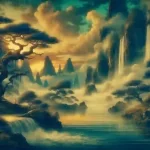
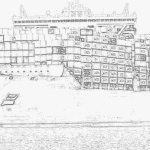


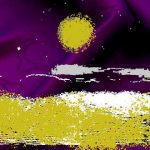
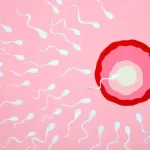
Leave a Reply